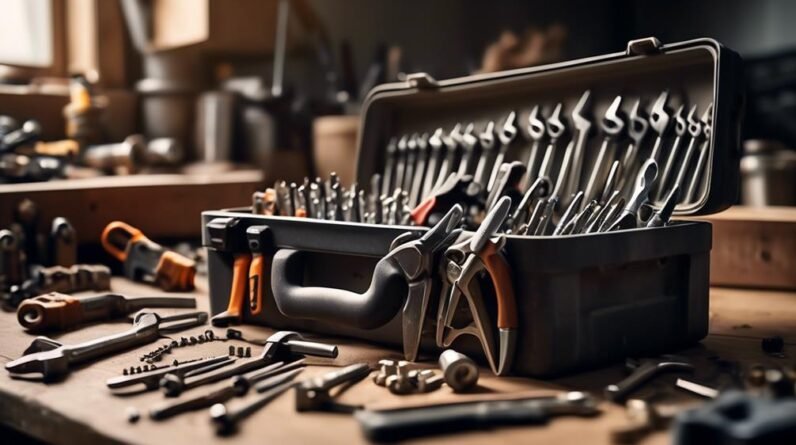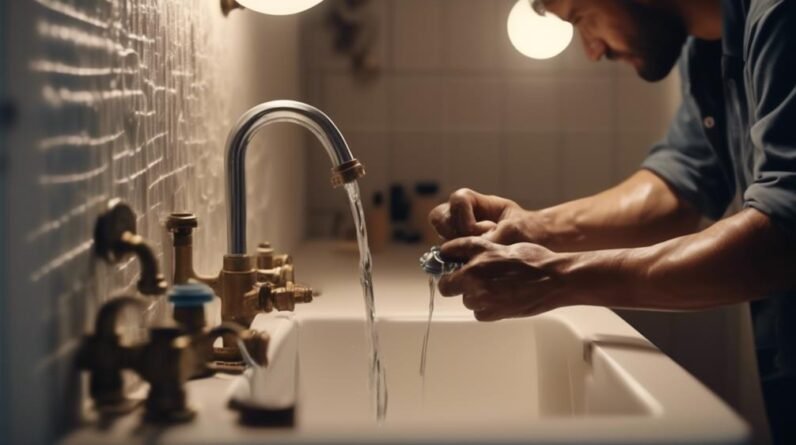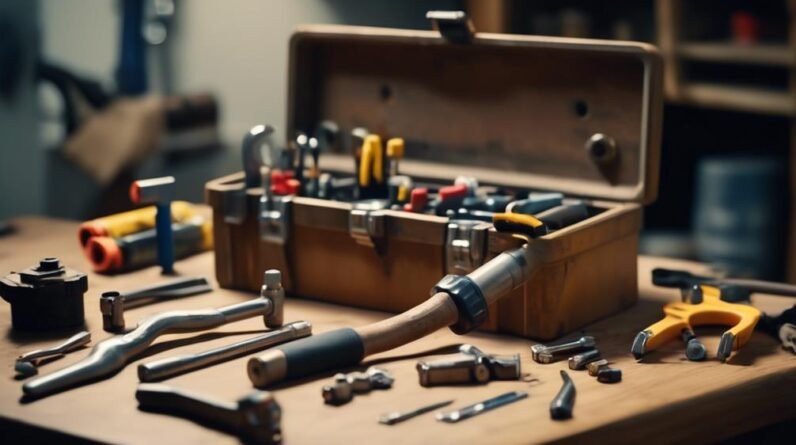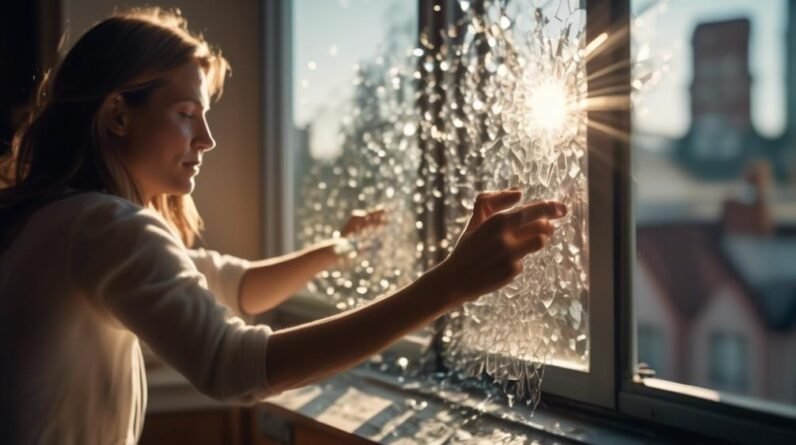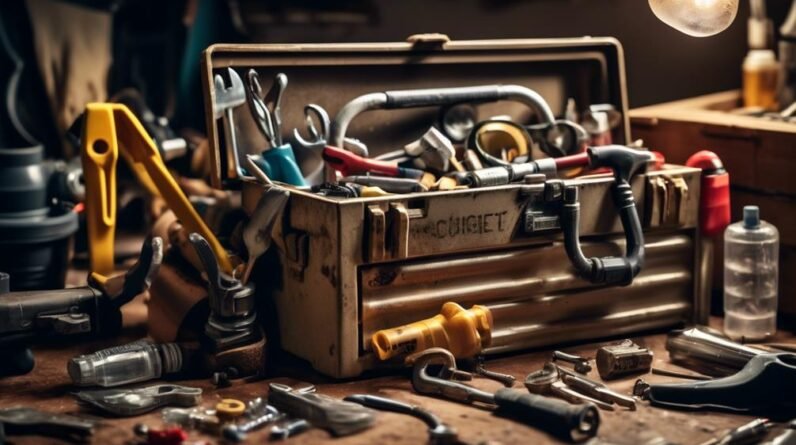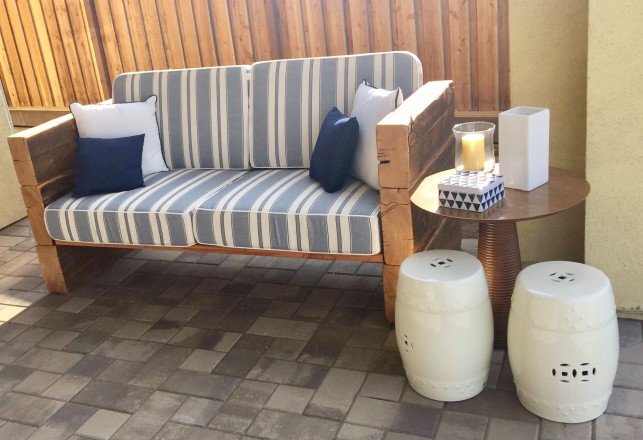
Upgrading Landscape Design Tips
Have you ever looked at your garden and thought, “This needs an upgrade”? If so, then this article is for you. Here we provide tips on how to improve your landscape design, making it not only look better but also function more efficiently. Whether you are starting from scratch or just need a few tweaks here and there, these guidelines will help get the job done.
The first step in upgrading your landscape design is assessing what already exists. Take note of the terrain around your property as well as any existing trees, shrubs or other plants that may be present. This can give you a good idea of where to start with your improvements and what elements might be most effective in achieving the desired result.
From there, consider adding hardscaping features like decks, patios or walkways to create visual interest and add usable space to your outdoor area. You can also incorporate lighting fixtures into the design for both aesthetic appeal and safety purposes. Finally, don’t forget about incorporating low-maintenance plants into the plan; they’ll keep things looking fresh without requiring too much effort on your part!
## 1. Assess Your Existing Landscape
Before you start upgrading your landscape design, it’s important to assess what currently exists. Take a good look at the space and decide which elements should stay, be moved around or taken out completely. Consider how people use the area – is there enough seating? Are pathways wide enough for two people to walk comfortably side by side? Is there adequate lighting in the evening?
Also consider any existing structures: are they up-to-date with current regulations? Check that fences, gates, walls and sheds are all structurally sound before making decisions about their aesthetic value. Finally, take into consideration any changes in lifestyle since the landscape was first designed – has the family grown larger or smaller, do you entertain more frequently than before? All of these factors will help you determine where improvements can be made.
When undertaking an upgrade to your landscape, make sure that your goals are realistic given the restrictions from existing elements. Have an idea of what kind of materials you would like to include; this could range from hardscaping such as bricks and stones or soft landscaping such as shrubs and flowering plants. Think about how these materials might work together within the outdoor environment –will they create visual interest while still being functional? Will they fit with both your current style and future plans for the property?
An assessment of your existing landscape will provide invaluable information on how best to upgrade it effectively. Make sure that all aspects are considered so that when you begin planning your new design it takes shape quickly without costly mistakes along the way.
## 2. Develop A Landscape Design Plan
Next step in upgrading landscape design is developing a plan. To do this, assess what you want to achieve with the new design and consider your budget and timeline. Think about how the garden should be laid out, which plants to choose or if you need hardscaping elements such as paving stones or a pond. Research local regulations on landscaping too so that you stay compliant.
Listing these elements will help create an overall picture of the desired outcome for the upgrade project. Don’t forget to keep it simple – stick with basic ideas rather than complex ones at first until you get more experienced. Also take into account maintenance requirements when considering different types of plants and materials for use in the garden.
Once all elements are determined, draw up plans of your landscape using tools like graph paper and pencils or 3D software programs available online. This will give you an idea of what your final installation could look like before actually purchasing any supplies or starting work on the project itself. It’s important to have visual representation to ensure everything fits together correctly and looks aesthetically pleasing upon completion.
When designing outdoor space, envision how people may move through it, imagine where furniture pieces might fit best and think about scale relative to its surroundings – large trees near small buildings won’t look right! After settling on a design that works well within the landscape context, determine necessary material quantities needed for the job – taking into consideration size and type of plantings required plus other details related to construction features like pathways, lighting etc.. Finalizing this part of planning process will help ensure successful implementation of upgraded design scheme while staying within budget constraints.
## 3. Select Appropriate Plants
Time for the next step. Selecting plants for a landscape design upgrade is an important part of any plan. It’s essential to consider both aesthetic and practical value when making choices.
Research local climate, soil type and available sunlight before choosing what will grow best in your area. Use this data to select plants that are suitable for your space and look great too. Think about color scheme, texture and size as you narrow down options. Variety can be used to create interest while maintaining continuity throughout the garden or yard.
When selecting plants, also research their maintenance needs – water requirements, pruning frequency, fertilizer preferences etcetera. This information can help you determine which ones fit into your lifestyle with ease; those that don’t require constant upkeep but still thrive in their environment. Low-maintenance varieties may cost more upfront but could save time and money long term.
Choosing the right plants is key to creating a functional outdoor living space you’ll love spending time in – one that looks beautiful without needing constant attention from its caretaker!
## 4. Consider Lighting And Hard Landscaping
Lighting and hardscaping can add a lot of visual appeal to your landscape design. Lighting enhances the beauty of plants, trees and flowers while also providing visibility in areas with low light levels. Hard landscaping includes elements such as retaining walls, decks, paths, water features and other structures made from materials like stone or concrete. These elements can be used to create an attractive outdoor space that is functional too.
When selecting lighting and hardscaping for your garden it is important to consider the effect you are trying to achieve. Look at how each element will play off one another – what kind of balance should there be between soft elements (plants) and hard elements (structures)? Also consider colours, textures and shapes when making decisions about what kind of lighting or construction materials would best suit your landscape design project.
It’s also important to take into account practical considerations such as where electrical outlets are located if you plan on using electric lights, or whether certain items need planning permission before being installed in your garden. By considering these details carefully now you will save yourself time and money later down the line!
By taking all these factors into consideration when designing your new landscape you will end up with a beautiful result that looks great both day and night.
## 5. Utilize Garden Accessories And Focal Points
Accessorizing a garden adds the final touch. Garden accessories can be anything from bird feeders to ornamental plants, water features and sculptures. They can also work as focal points in any landscape design.
Focal points are an important element of landscaping because they draw attention to certain areas and create interest in the garden space. When selecting a focal point for your garden, think about its purpose: is it meant to provide privacy or add colour? Is it intended to bring wildlife into the area or act as a decorative feature? Consider where you will place it within the overall design of your landscape before deciding on what type of accessory to use.
When choosing these elements for your garden, make sure that they fit with the existing landscape style and complement each other. Pick items that don’t overwhelm the environment but still stand out enough to draw attention. Think carefully about how much maintenance such items will require; if you’re looking for low-maintenance options then consider opting for hardscaping instead of lush plant life which needs regular care.
With careful thought and planning, adding accessories and focal points should help enhance your outdoor experience and tie together all aspects of your upgraded landscape design.
## 6. Incorporate Water Features
Water features are an excellent way to upgrade a landscape design. They can add beauty, tranquility and interest to any outdoor space. Incorporating water into the landscape is also beneficial for wildlife and can provide a habitat for many species of plants and animals.
Adding water features such as ponds, streams or fountains will create focal points that draw attention away from other areas in the garden and break up large expanses of turf grass or paved surfaces. Ponds can be installed at varying depths depending on what type of aquatic life you wish to attract. Streams offer not only visual appeal but also a pleasant sound when running over rocks or gravel. Fountains are perfect additions if you’re looking for something more sophisticated – they’re available in all sizes, shapes, materials and price ranges so there’s sure to be one which fits your budget and aesthetic perfectly.
When considering adding water features to your landscape design it is important to plan carefully before beginning construction. Make sure you know where the power source for pumps, filters or lights is located, ensure the area surrounding your feature isn’t prone to flooding or standing water after rainstorms and think about how much maintenance you are willing/able to do each week to keep things running smoothly.
Taking these factors into account prior to installation should help make sure your new water feature adds value rather than headaches down the line!
## 7. Create Different Levels
Creating different levels in your landscape design is a great way to add interest and texture. It can also help draw attention away from any parts of the yard that you don’t want people to focus on. The trick to creating effective levels is to make sure they have an interesting shape and are easy to move around in.
Using rocks, plants, or other materials, you can form steps, walls, or terraces for added visual appeal. Make sure whatever material you use is sturdy enough to withstand the elements and won’t be washed away by heavy rainfalls. You should also consider how much maintenance will be required when choosing materials so that you don’t find yourself spending too much time maintaining them instead of enjoying your outdoor space.
Adding these features can give your landscape design a more dynamic look while still being functional. Consider areas where seating would work well with the terrain or places where pathways could be used as shortcuts between points of interest in the yard. By incorporating different levels into your landscape design, it will become easier to appreciate all aspects of its beauty no matter which angle you view it from.
## 8. Maximize Space Efficiency
Space efficiency is key when it comes to landscape design. Understanding how to make the most of your outdoor space can help you get the most out of your upgrade project.
When maximizing space, think about using a variety of shapes and sizes for hardscaping elements. Strategically placing items like benches and planters in corners or along walls will create an interesting look while also utilizing every inch of available area. Consider adding multi-functional pieces such as modular seating that doubles as storage, or raised beds with built-in grow lights for year-round planting.
When planning for larger plants, trees, and shrubs, be sure to check their mature size before purchasing them. Planting too close together can cause overcrowding which affects growth patterns and makes upkeep more difficult than necessary. Instead, spread things out and use paths between plantings to provide access without trampling foliage. This not only saves time but encourages movement throughout the garden while enjoying its beauty and bounty.
Making efficient use of all areas within the landscape helps ensure that each element stands out on its own while still working harmoniously together to create a beautiful overall effect.
## 9. Invest In Quality Materials
Quality materials can make a big difference in landscape design. Investing in good quality plants, stones and soil will ensure that the design looks great for years to come. This is especially important if you plan to keep your landscaping updated regularly. For example, having high-quality shrubs means they’ll be less likely to need replacing in a few years – saving time and money over the long term. Plus, well designed features like stone paths or walls should last longer if made with durable materials.
Take some time to research what’s available on the market before investing. Look at products from different suppliers and compare prices for similar items. Consider any special treatments needed for certain materials such as sealing stones or treating wood against pests. Get recommendations from friends who have done recent projects, or check online reviews of local companies. With all this information, it becomes easier to decide which materials are best suited for your needs while still being cost effective.
Having quality materials doesn’t just improve aesthetics; it also helps protect plants by providing better drainage and nutrients in the soil. When properly maintained, these elements work together to create vibrant colors and shapes throughout the year – making your outdoor area an inviting place where people want to spend time relaxing or entertaining guests.
## 10. Rely On Professional Assistance
Relying on professional assistance is essential for upgrading landscape design. A knowledgeable landscaper can provide valuable input about the area’s soil type, drainage system and other factors that could influence a new design plan. This expertise ensures the best materials are chosen to create an aesthetically pleasing outdoor space while also preserving its functionality.
A qualified contractor has access to industry-specific tools and equipment needed to complete the job safely and efficiently. Their experience helps them recognize potential problems before they start work, allowing more accurate estimates of cost and time required for each task. Professional help also guarantees any necessary permits or inspections are obtained in compliance with local regulations.
Engaging experienced professionals reduces stress and hassle involved in redesigning outdoor spaces by having someone else take care of all the details from preparation to completion. And when working with reputable companies, homeowners have peace of mind knowing their project will be done right – saving time and money in the long run.
High quality materials combined with expert advice make it possible to achieve stunning results that turn ordinary yards into extraordinary landscapes perfect for entertaining guests or simply relaxing at home.
Frequently Asked Questions
## What Is The Average Cost Of A Landscape Upgrade?
Upgrading a landscape design can be costly. The average cost of an upgrade depends on the scope of the project and other factors. It is important to consider all costs in advance to see if the desired outcome will fit within budget constraints.
The size of the space and complexity of the project, as well as materials used, are all key elements that contribute to how much it will cost. Projects with larger areas may require more labor, while those with unique designs or intricate details could include higher material costs. Landscape upgrades often involve things like hardscaping features such as pathways and patios, installing irrigation systems and drainage systems, tree removal or pruning, planting trees and shrubs, adding lighting fixtures and creating outdoor living spaces with seating walls or decks. Each element brings its own associated price tag.
When considering an upgrade for one’s landscape design, it is best to get estimates from reputable contractors who have experience in this area. Talking through each step- what needs done and which materials need purchased- allows a person to understand exactly what they’re getting for their money so there won’t be any unexpected expenses later on down the line. Budgeting wisely up front will help ensure satisfaction when complete.
Doing research ahead of time can save time and money in the long run by avoiding unnecessary work or overspending during the project. Knowing what kind of return on investment makes sense for your particular situation is also essential before investing large amounts into a landscape upgrade.
## How Long Does It Take To Complete A Landscape Design Project?
Landscape design projects can be complex and require a lot of time to complete. It is important for homeowners to understand the timeline associated with their project before they plan an upgrade. How long does it take to complete a landscape design project?
The answer varies, depending on the size of the project and its complexity. A simple landscaping job such as mowing or trimming may only take an hour or two, while designing and installing entire outdoor spaces could easily take weeks or even months. Factors like climate, soil type, plants chosen, irrigation system installation, hardscaping elements and required permits all play into how quickly the project will be completed.
It is wise to anticipate delays in any large-scale home improvement project. If there are issues during construction due to weather conditions or unforeseen problems that arise once work begins, the timeline could be extended significantly beyond what was originally estimated by contractors. Homeowners should discuss possible setbacks beforehand so that they know what to expect if something goes wrong; this helps alleviate stress throughout the process.
Homeowners should research different types of landscape designs and get multiple bids from reliable professionals in order to make sure that their desired outcome is achieved in a timely manner. Contractors who have done similar jobs successfully often provide accurate timelines right up front – allowing them more leeway when problems occur – which can help keep the overall cost down as well.
## What Are The Best Types Of Grass For My Region?
Choosing the right type of grass for your region is key to upgrading a landscape design. It can make all the difference in how quickly and easily your project will come together.
When selecting grass, you should consider climate, soil quality, and water availability. Depending on where you live, there are several types of grass that may be suitable for your needs. For example, warm-season grasses such as Bermuda and centipede prefer warmer climates while cool season varieties like Kentucky bluegrass thrive in cooler temperatures. Additionally, different soils require different fertilizers to ensure optimal growth – sandy or clay-based soils have very different requirements so it’s important to choose turf that matches with what is available in your area.
Finally, water availability also plays an important factor when choosing turf; some species need more frequent watering than others which must be taken into account depending on local rainfall patterns. Researching the best options available in your particular region before making a decision could save time (and money) down the line by avoiding costly mistakes or unnecessary maintenance issues.
## What Is The Most Cost-Effective Way To Add A Water Feature?
Adding a water feature to your landscape design can give it an extra touch of life and beauty. Water features are not only aesthetically pleasing, but they also bring sound and movement to the space. To make sure you get the most out of your investment, it is important to consider the cost-effectiveness of adding one.
The first step in finding a cost-effective solution for adding a water feature is assessing what type of water feature will work best with your local environment and climate. Different types of materials and designs may be more or less expensive depending on where you live. Additionally, certain plants and fish may require specific care that could increase maintenance costs over time.
If you have decided which type of water feature would suit your needs best, research any additional elements that need to be taken into consideration such as power sources or drainage systems. Once all these factors have been accounted for, compare prices from different vendors to find the most affordable option without compromising quality. Doing this diligence upfront will help ensure you don’t run into unexpected expenses during installation or upkeep down the line.
From there, it’s just a matter of following through with the project – taking necessary safety precautions and hiring professionals if needed – until you finally get to enjoy your beautiful new addition to your landscape design!
## Are There Any Low-Maintenance Landscaping Options?
Landscape design can be a great way to improve the look of your home. Upgrading it, however, can often come with a hefty price tag. One important question to consider is if there are any low-maintenance landscaping options that offer cost savings without sacrificing quality.
The good news is, there are! Low-maintenance landscaping features such as rock gardens or rain barrels provide attractive and practical solutions for homeowners looking for ways to save money but still add curb appeal to their property. For example, instead of installing an expensive water feature like a fountain or pond, opting for a smaller scale rain barrel or birdbath will bring life to the garden while also being much easier on the wallet. Additionally, hardscaping elements like gravel pathways or stone walls require little upkeep and create visual interest in outdoor spaces.
When considering how best to upgrade landscape design, take into account what you need most from your outdoor space and go from there. Choose items that fit within your budget and don’t require too much effort in maintenance once they’re installed – this way you’ll get the most bang for your buck! With some careful planning and research, it’s possible to find inexpensive yet impactful ways of enhancing your landscape design without breaking the bank.
## Conclusion
Landscaping is a great way to improve the appearance of your home and increase its value. Upgrading your landscape design can be both time consuming and costly, but with some research you will find that there are many options available to suit any budget or timeline. Grass selection should take into account climate, soil type, and other environmental factors in order to ensure success. Water features add an extra element of beauty and tranquility; however, it is important to consider cost-effectiveness when deciding on which one to install. Finally, low maintenance landscaping options like xeriscaping provide long lasting color without frequent watering or care. With careful consideration and planning, you can create a beautiful outdoor living space that adds charm and personality to your home.


